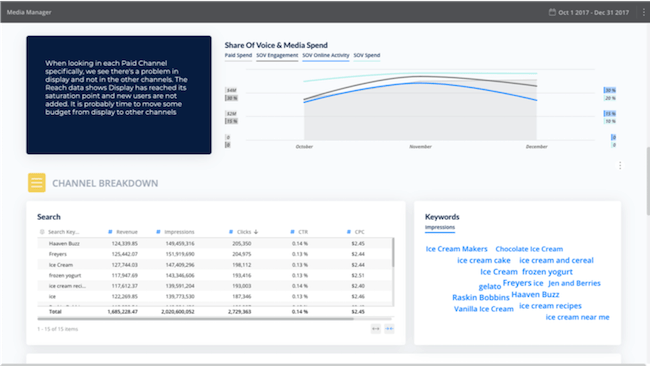How to Measure Social Insights Across the Customer Journey



For most marketers, measuring their return on investment (ROI) for social is a major challenge. Here are three steps to take to gain valuable social insights and measure social returns.

Emily Hoffman
Forrester expects global social advertising spend to reach $165.6 billion in 2023. But for most marketers, measuring their return on investment (ROI) for social is a major challenge. Without full transparency into their social investments, marketers struggle to answer critical questions. What campaigns are performing the best? How do I prove the ROI (or increasingly, return on experience) of my social spend? How can I find social customer insights and benchmark? And with hot topics and trends changing by the minute, marketers need to know what customers are talking about in real time. Here are three steps to take to gain valuable social insights and measure social returns.
1. Connect cross-channel views
Today’s modern marketers are using a multitude of channels to engage with customers. Meanwhile, customers care about their overall experience across these channels. 84% of customers say the experience a company provides is as important as its products or services and 73% expect companies to understand their needs and expectations. The key to better, more personalized engagement is understanding and optimizing performance.
The first step is to connect and unify all of your marketing data across your marketing stack. By connecting it, you’re creating a single source of truth for all of your data. And social data is no exception. Use API connectors that integrate data from your marketing platforms. For example, marketers could use tools like Datorama (marketing intelligence platform) to connect data from Social Studio (social media management). This allows them to not only view social data but also other metrics impacting marketing performance. This includes paid and organic social media, web analytics, sales data, and other marketing or advertising data. With social data, you could gather insights on industry trends, brand health, competitive messaging, and more. This ongoing connection saves marketers significant time and resources that are often spent on manual integration.
2. Use awareness/consideration data to optimize your social presence
Combining data across tools allows you to maximize the power of insights. Let’s go back to our example of Social Studio and Datorama. Through Social Studio, you gain access to awareness and consideration data — such as social sentiment, listening data, keywords, and share of voice. Then, using Datorama, you can combine it with data from other channels — such as display, search, and email — to gain a full view of your audience and your competitors. With this full view of effectiveness across channels, marketers can make changes to their social messaging and strategy and ensure it is resonating with customers.

3. See growth metrics and make smarter decisions
Marketers are tasked with a dual mandate – drive both exceptional customer experience and overall business growth. On top of that, there’s a growing responsibility to link every marketing investment back to ROI. To make smarter decisions and report back to key stakeholders, they need access to insights at their fingertips. In combining ROI data from both paid and organic social campaigns, marketers get a 360-degree view of social campaign performance. With a holistic view of conversion data, they can understand how social is driving traffic and engagement. Additionally, if your tools have artificial intelligence (AI) capabilities, you can create a smarter pipeline. AI can surface your most important channels and campaigns, and show you real-time analysis. This enables marketers to take action and reinvest in what’s working and pause spend on what’s not.
Learn more about social media marketing and management with Social Studio, and how to measure marketing performance using the power of artificial intelligence with Datorama.























